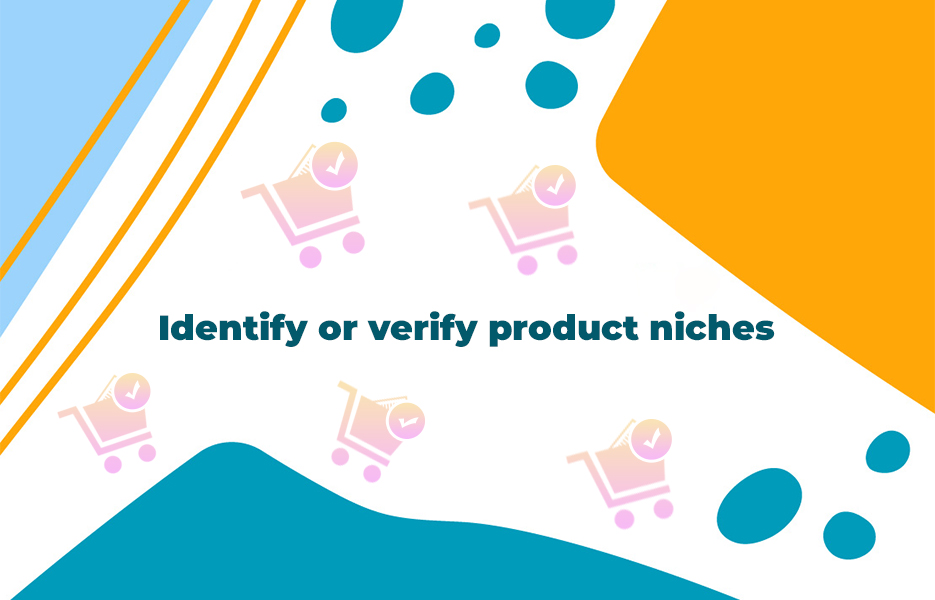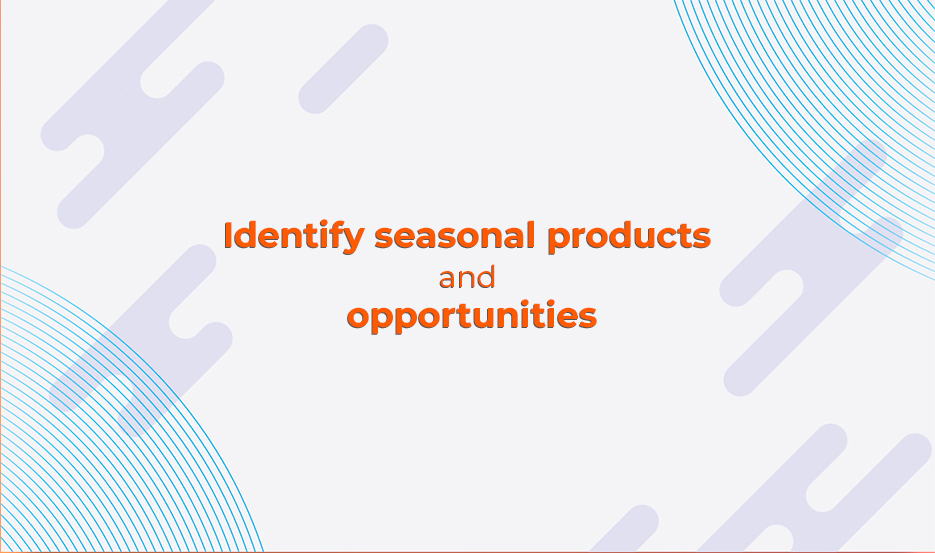Using Google Trends to build your eCommerce business in 2020
When you’re looking to sell online, or even once you have started, the biggest thing you want to avoid is waste – wasted money, wasted time (which is essentially wasted money).
We spend time and money on products, on building and writing our listings, on advertising and social media, and our objective is that these investments will then bring customers and sales, and that our income will be more than we spent. Is this the case for you right now, though?
The key to picking the right products and selling well is affected by experience, but experience has its limitations – You’re having to make an educated guess, and they average out around even, or slightly better than even for most. Even when you’re doing well, there’s always the worry that you’ll have a bad day, and the implicationsof that drop on the rest of the year.
You can mitigate some risk areas – For example, instead of buying in new stock on risky lines, you can use DropShipping, so that you only commit to paying for the products you sell, keeping your wage bill and commitment to paying for premises lower, and avoiding the risk of dead stock. But sometimes you have to roll the dice. Or do you?
You can brainstorm what you think will work. But then use data to check those ideas against what people are looking for, and to see when they look for it – You don’t want to sell picnic hampers in December!
Ideally you want one of two things, or maybe both:
- To be ahead of the trend, and ready to make money from it
- To find a solid and consistent money maker that you know isn’t being served well
But you DO want to be sure there are enough people interested to make it worthwhile, or to avoid overcommitting. There are a number of tools to use for this, and one of them is free, from the biggest search engine in the world.
What is Google Trends?

Google Trends is a tool that allows you to identify trends and patterns in searches on Google for specific words or phrases. It shows these searches on a graph over the period of time you specify in your search.
It’s not searching from ALL of Google’s search data of course – you’d have to put in a request and come back next week, rather than getting a result in seconds. Instead, it searches based on a significant sample of randomly chosen data that can be drawn from as early as 2004, and as recently as 36 hours before your search.
It shows results on a scale of 0-100 for that term – Essentially as a percentage of the maximum number of searches Google has ever seen. 0 isn’t ‘no results’, though – Just the smallest number of people searching.
What this means is that you have to be careful when searching and comparing results for different words and phrases. We’ll look at that in more detail later.
How do I use Google Trends?

Google Trends is accessible online, through your web browser. You can export your results and download them as a CSV file for analysis elsewhere if you need to.
Remember that you need to set aside enough time to use Google Trends properly. It may seem simple at first, but it’s got lots of options and data to work with, and once you get the hang of it, you can produce deep, detailed results – some positive, some negative. These will help you to shape the way you grow and present your business. It’s not an SEO tool as such, it’s a strategy tool that overlaps with SEO tools like SEM Rush, and with your ad management.
Initial search

You’ll start your search at https://trends.google.com/trends/.
It shows a search bar, and some examples for you to have a play with if you’re new to Trends.
If you know what you want to search for, then enter the word or phrase. As you type it, Trends will offer suggestions. These will generally have a dark text line on top, and a grey text line underneath. Google will try to find specific items, activities, or even songs, books and paintings that match to your term. In order to help you get as accurate a set of results as possible, click on the one if it is the right option. If none of the specific suggestions work, then select the one labelled ‘Search term’.
You may need to hit ‘Enter’ on the keyboard when happy to continue, or click on the magnifying glass, but it will usually start the search when you select an option.
You should receive two main sets of results – a line graph labelled ‘Interest over time’, and a colour coded map showing ‘Interest by sub-region’.
Underneath this will be two lists:
- Related topics
- Related queries
We will look at these in more detail later in this post. Essentially, they let you see what people who searched for your term also searched for, so you can find opportunities for complimentary searches or items.
Customising search

If Trends returns no results, you may need to look at the options for the search.
Some products sell better in one country than another, or only sell seasonally.
Sometimes you’re going to be looking at selling a product which has a nickname, and so you’ll want to narrow down your searches to a specific category.
Depending on the product and target market, you’ll be wanting to look at web searches or the news, even at YouTube searches. Trends lets you filter and narrow or expand your search results by:
- Geographical Region
- Time period
- Category
- Type of search
Geographical region allows you to look at the search results for the whole world, a specific country, or a US state or municipality. This is useful for you if your business is targeting only one country initially, or you’re looking at selling in another country.
The quick select time periods vary, but is always from today (actually 36 hours ago) backwards – a day, a week, a month, a year, or the whole range from 2004 ‘til today. You can also specify a custom start and end date. This is a good way to identify peak season, for example, or when you will likely get less sales and should minimise stock.
The categories let you narrow down the search results you’re looking for, so if you’re looking to see what people are looking for with that terms specifically in Entertainment, you get ‘cleaner’ results which are more focussed for your needs.
The type of search you should select will depend on the purpose. Trends defaults to web search, but you can also select:
- Image search
- News search
- Google Shopping search
- YouTube search
These will allow you to see where/when people are searching for the term you use for specific needs, and when combined with the other options can give you either a large set of data to work from, or very specific results.
How can I use Google Trends to benefit my business?

Identify or verify product niches

When looking for trends that you can make money by servicing, you can try to validate possibilities by looking for patterns in the demand for an item on Google.
Firstly, of course, you need to identify one or more possible opportunities. It may be that you have heard people talking about things being hard to get hold of, and you have found a source, or that you yourself have been looking for something. Maybe a supplier has been in touch to see if you’re interested in new products.
Use Google Trends to see if people are looking for that item, and how many – You may need to try a few variations to confirm total demand if you only know it by a brand name, of course!Once you know that people are currently searching for it, you can look back to see what the history of that interest is.
Tip: To check the long term demand,use the ‘2004 to present’ option. This gives you access to the maximum information, so you have a ‘bird’s eye view’.
Is the item or term something new, only recently of interest? If so, use trends to see how long it’s been popular, and how steady the interest is. Could this be the start of a steady demand, or a fad about to peak, with demand about to collapse? The last thing you want is to come in late on a fad – Remember ‘Fidget Spinners’?
Is this something that has been popular before? If so, it may be worth doing some research on when/why the demand dropped off. Is it something that has been or can be improved this time? If you can address that, you can possibly improve the life of the demand, and the return on your investment.
If there wasn’t a problem with the product, then focus on making sure you have an accurate picture of the pattern of demand. Use shorter time frames when you’re trying to confirm where demand has historically dropped off, and to help you decide where current demand is compared to historical levels and trends to see what you want to do next. Is it worth becoming a part of this trend now?
If it’s been popular several times, and followed a similar pattern, then compare the pattern to the current interest. Look at where you currently are, and what the potential life cycle and demand might be this cycle. Maybe, if the interval between demand is short enough (annual/seasonal), you may be better off planning to be ‘in at the ground floor’ for the next cycle, and ‘own the niche’, before repeating and building on that.
Tip: Don’t jump in too late, just as demand is due to drop off. You’ll probably find someone else already got in early and made a killing, so your potential earnings may be minimal, or you might left holding a lot of dead stock.
Where you’re looking to find an opportunity for a steady selling line, maybe to hedge your bets against some more unusual opportunities, then definitely look long term. Remember, while it may look like there’s a lot of sustained demand for something based on the last 12 months, the results since 2004 may show that it’s at a peak and due to drop off. Always take the long view by default.
Keyword research and validation

When your business is doing well, but you want to move forwards, Google Trends can help you to identify new opportunities for your existing products, or to find new complimentary products or services to try.
The ‘Related Topics’ and ‘Related Queries’ lists will show you things which people are looking at who are also interested in your target term(s). If there’s one or more that is of interest, you can feed those terms into Google Trends and see what interest and demand is like for them. This can lead you to new avenues of research and fresh opportunities.
Take ‘barbecue’ as an example – You have a business selling, say, Weber barbecues and accessories as part of a larger outdoor goods sugment. When we search for it, we can see demand rises and falls periodically, as you would imagine. Looking past that, and the map shows you where people are searching for it. Beneath that, though, are the lists of terms we want to look at.
‘Related Topics’ shows you things that people searched for as well as searching for ‘barbecue’.
‘Related Queries’ shows the specific terms people are looking for in addition toyour chosen search term.
You can order the lists in 2 ways:
Rising –This identifies terms with the biggest increase in searches compared to the previous time period (So if you searched for the last month, then it would show the items with the biggest improvement compared to the month before. An entry might even be labelled as a ‘Breakout’ if it’s had a significant increase in traffic – usually where something has gone from few or no searches to a significant number with a couple of zeroes involved).
Top –This rates them on a scale of 0-100 as relative popularity, as with the Trends results themselves. So the terms which are the most popular will show as 100, or near 100,while those returning he lowest number will be closest to zero,
Don’t forget that there may be some interesting contrasts between the two views. An item may score near to 100 in the ‘top’ list, but, be at the bottom of the ‘Rising’ list if demand is relatively consistent. This means you can identify topics or areas to cover and investigate that are more likely to compliment your existing focus.
So in this case, looking at ‘Related Topics’, and selecting ‘Rising’ gives me ’Potato chips’ and ‘Side dish’ as potential complimentary product offerings, whether actual products, recipe books, etc. Meanwhile ‘Top’ is focused, unsurprisingly, on recipes and the meats, though ‘Barbecue sauce’ shows up.
Moving across to ‘Related queries’, ‘Rising’ gives us ‘How to barbecue ribs’ and ‘crock pot barbecue chicken’. “Top”gives us ‘barbecue sauce’, ‘barbecue chicken’ and ‘barbecue grill’.
From this, we can take a couple of things away to investigate further:
- The potential of carrying food products (Sauces, side dish ingredients with long shelf lives, Potato Chips) to ship to people as part of their barbecue orders, possibly focusing on things that are premium or hard to get in your target areas. This increases your basket size, and your revenue per customer
- That recipes are a popular query so that people can get the best results from their barbecues – And can encourage them to buy additional products, or even upgrade their barbecue! o Recipe books
o Free recipes on the site to draw organic traffic
o Recipe videos to promote the business and draw new traffic for current products as well as new lines
You can now look into options and demand for these options, as well as costs and suppliers, and maybe return to Google Trends a little later to refine your decisions for final action.
Tip: It’s worth considering, whether the large volume of searches is positive or negative – People search when they want to complain, or have a problem, as well as when they want to buy, after all! While the ‘Related Topics’ and ‘Related Queries’ lists only show 5 entries, you can click on the arrows beneath them to go left and right and see more returns.
Tip: Another reason to use the longest possible view, in terms of time, is to be sure you have good context on when something was most popular (It may be declining in polarity, with lower peaks each season), or where something has been in steady demand, but that demand lowered at the time another search term started rising in popularity – Sometimes the steady option isn’t as exciting or profitable as the new wave, if you believe it has plenty of life in it!
Identify seasonal products and opportunities

Some products and ranges are seasonal – You don’t buy picnic hampers in London in December!
This is particular true in fashion markets – including sporting and recreational wear. They bring out new collections and designs each season, constantly changing, so you have to keep up!
It’s good then to identify if that ‘seasonal’ demand is consistent across the world, or if you should look at a strategy to sell the same lines and products in different regions depending on the time of year – After all, Australians have Christmas in the summer, while British people sing about snow, as the seasons are different while dates are the same. While this year’s skiing season in Europe is over, it’s just starting in the southern hemisphere. Each region also has its own marketplaces that are dominant, so while Amazon is obvious in the UK, TradeMe might be a better option in New Zealand.
In addition, if you have a great opportunity that’s marginal to keep the business up and running, maybe you should look for a complimentary offering that the company can switch to – This not only makes it worthwhile to continue selling the ‘off season’ product and be able to retain customer loyalty all year round, but it provides your business (and you, and your employees) with insurance, should one side of the business have a bad year.
How do you do this? Easy – let’s go back to barbecue.
Looking at the curve for 2004 to present in the United States, you can see that, while search volumes are overall trending upwards, there are regular peaks and troughs. These identify seasonal, or periodic, demand. Move your mouse pointer to the blue line, and where you touch the line it will show a blue dot, and a tool tip with the month/date and the score for the relative volume of searches.
As you move your pointer along the curves, you’ll see that the peaks are occurring, of course, in the summer – May to August or September, and then the lowest points occur in the Winter – October to January.
So if you are running a traditional eCommerce business, you would be looking at buying stock in to service your peak from about April, but selling most of the lines with lower stock holding by about September. There’s no point tying up money and ad spending on stock which won’t sell, and will be superseded in the spring, though there’s always a few sales trickling in at odd times. You can now look at estimating sales volumes over the period. You can also start thinking about when you start and stop promotions through paid ads, etc, based on these search volumes – Allocating more money to keep your ads in front of your potential customers!
If you’re a dropshipper, the burden of stock planning is shifted to your supplier, but you will want to make sure they are going to have enough to feed demand and sustain your business, so it’s still important to do this sort of planning.
Your next step is to start looking for something to sell that IS popular in the UK over the winter months to compliment your existing business, and to enable you to run barbecue stock down in September as you bring in new stock for winter.
If the peaks are more than once a year, remember to ensure that the appropriate dates are in your calendar to ensure you catch all of the opportunities, and aren’t left holding stock when you don’t need to. Preparation will help you get out in front of the pack.
Tip: If it’s not clear why, try finding out what happened/happens on that date – It may be a general thing like ‘start of summer’, something more regional, like a bank holiday in the UK, or even something in the media, like a new competitive barbecue show! This lets you figure out if it’s a one-off, a repeatable trend, or one that‘s likely to decline as the new, exciting show diminishes in popularity through the seasons, or is cancelled.
Regional search and targeting ads

If we’re looking at selling our products in different countries/regions based on when there is demand for it, then we need to be using the filtering options geographically a lot more carefully.If we reset the search to filter for search results from Australia, we will see the trend reversed. ‘Barbecue’ is most searched for the period through October to January, which is summer for Australians.
Tip: Selling barbecue equipment in Australia for a British seller probably isn’t as easy to do as clothing, due to shipping costs, etc., so we won’t necessarily look at selling the whole range, but if we are selling recipe books, maybe we can promote and sell them in the off season in order to keep some income from that side of the business. It’s worth making sure you’re offering services that make sense financially.
We can use the peaks and troughs in demand to identify the point when you want to start allocating more money to ad campaigns targeting Australian shoppers using search terms such as ‘barbecue’ and others from the previous research that are valid to the books. Also, you need to identify when to reduce or end your efforts – You may sell a few barbecue recipe books in the Australian winter, but there are better places to spend your money. We can repeat the same process filtering for New Zealand and other southern hemisphere countries such as South Africa – Especially those where English is widely spoken. This can identify secondary markets for you to open up – Even if you only get 10 orders a month, is the return enough to cover or exceed the ad spends? Then it is worth keeping up, as it pays for itself, raises brand awareness for potential peak sales.
Remember to focus on promoting products customers might reasonably want to buy in that region – think about postage costs (weight, size), for example, and check if it’s available there already at a cheaper price.
Brand search – Competitor comparison

Next to your search term in Google Trends, there’s a second section labelled ‘+ Compare’. This lets you add other terms into the search, and show their trends over the same period alongside the first term – as many as 4 more!
So let’s assume you’re looking at 2 offers from suppliers with an exclusive deal, and you want to know which one to pick. One factor to consider might be how popular they are in terms of search – If people are looking for them, then they’re likely to be interested in buying them, right?
We can test that theory by adding them, and maybe a couple of others, into Trends. Here I have used ‘Weber’,‘Outback’,‘Landmann’, and ‘Char-Broil’. As you can see, the terms are colour coded, and it’s clear to see that ‘Weber’ is the most searched for brand name, though ‘Outback’ is starting to approach them in popularity. You can also see the seasonal trend. If you put the mouse cursor on the graph at a particular point, you will see the date as before, but also the scores for the 4 terms.
These are all on the same scale, unlike making separate searches. In June 2005, the peak search score, at 100, was scored by ‘Weber’, while ‘Outback’ only managed 35, ‘Landmann’ 3, and ‘Char-Broil’ 2. It’s easy to see that there are definitely winners and losers in this market.
Tip: Don’t forget to scroll down – You’ll see a map of the selected search region, showing how popular each brand is and where. This could also influence your choice where 2 or more options are close.
To remove a term from the comparison, click on the three dots to the right of it, and select ‘Remove’. Trends will remove that term from the comparison, rebuild the new, simpler query, and redraw the graph for you in the new context. Don’t compare a score for the removed term on the old graph with one for a term in the new graph, as they are no longer easily compared without lots of complex maths – Just re-add it!
This also works for product ranges, too. If you don’t want to stock all of the products a brand offers, try comparing the brand and range names as terms to see what is most popular and when. Revisit a couple of times a year to keep up with changing tends, and to account for new ranges being introduced, and old ones retired. Maybe even use it as an opportunity to see who is looking for the old brand and see if you can capture that traffic and redirect them to a new brand or line which closest matches their needs.
Tip: It’s worth considering whether the trend you’re searching for and comparing is correctly targeted, or needs to be refined. Search for the term individually, and check the ‘Related Topics’ and ‘Related Queries’ lists, remembering that you can click on the arrows beneath them to go left and right and see more returns.
If, for example, you typed in ‘Outback’ as a barbecue brand, but the related searches are all for a car made by Subaru – You might need to refine your terms a little better.
Social media reach

There are several ways you can use Google Trends to increase your reach on social media,by getting your followers to share you, and new followers from those shares. These followers can then become leads and customers.
Daily trending searches

Google Trends has a ‘Daily Trending Searches’ page that you can review for what people are searching for now. It also has a ‘Real Time Search Trends’ tab. You can see related stories, too, and look out for relevant keywords that connect with your business and your products. If there is a toy safety story and you sell children’s products, then a blog post or a video talking about how rigorous safety testing is, and illustrating your policy to only buy tested and safe products is a great way to be relevant and highlight that you’re a good option for shopping as you don’t expose your customers to such risks.
These posts can be in addition to planned campaigns, or even warn you to cancel or change a campaign prepared in advance that might be overtaken by events. You don’t want to be the ones trumpeting an offer to earn free flights with an airline that just went bankrupt, or to advertise a giveaway for a product that’s currently embroiled in a scandal about racism or discrimination, for example.
YouTube searches

As well as web search, you can search for specific trend data on YouTube – this can give you some content ideas for the best way to use video to promote your products and gain new followers.
As the second most popular site on the internet after Google itself, there’s a huge volume of information here to help you spot trends before others do, and position your business to take advantage of potential demand, as so many people are watching video in preference to text content. It can also help you to target and prioritise you YouTube advertising.
Regional differentiation – Holiday differences, spellings and others

In modern society, we’re so used to instantaneous communication, fast travel and sharing content and entertainment via the web, it’s easy to forget just how many subtle, and not so subtle differences there are.
Dates and Holidays

Take, for example, Mother’s Day. In the UK, in 2020, Mothering Sunday, also known as Mother’s Day (as it is in the United States of America), is on the 22nd March – the 4th Sunday of Lent.
In the United States of America, India, Estonia, Belize and many other countries, it’s the 2nd Sunday of May, so May 10th, 2020. In Norway, it’s the 2nd Sunday of February, so February 9th, 2020. Many Arab states, including Saudi Arabia, Yemen, Jordan, Kuwait and Egypt, it’s celebrated on the Spring Equinox – the 21st March.
If you’re running promotional ads for products centred on Mother’s Day, it’s good to realise that this is a two-edged sword.
Some people may be annoyed that you ‘have the date wrong’, so be careful in targeting ads and communications. But if you have the perfect products FOR Mother’s Day, then you have a lot of options when it comes to promoting them, depending which countries you can/should target.
Spelling & Names

Similarly, when you’re targeting an area to promote a product, it’s good to ensure that you’re promoting the product people expect to hear about.
In the UK, a relatively small country, let alone ‘just’ England, it’s safe to assume that a bread roll will just be a bread roll, or maybe a ‘bap’. That would be a mistake. YouGov did a survey of just under 25,000 adults across England to see what they called a bread roll. They were more than a little surprised at receiving more than 4 different names for something so simple.
52% of people responded as ‘rolls’ or ‘bread rolls’, 10% of people used ‘bun’, 8% used the term ‘cob’, and 6% of English people use the term(s) ‘barm’ or ‘barm cake’, while another 6% voted for ‘bap’, mostly in Staffordshire, Cheshire and Shropshire.Other names used by smaller portions of the population included ‘Muffin’, ‘Tea cake’, ‘Batch’, ‘Scuffler’ and many more.
Look at what term(s) you should be using to advertise your product and get the most recognition. Consider if you will need to run some sort of supplemental content or advertising to help people looking for a different term to lead them back to your products. Don’t let assumptions cost you business!
So remember to do your research and narrow down to your target country or region to make sure you’re using the right word – Keep an eye on the associated searches and subjects!
Spelling can make a difference, too – popular or ‘foreign’ spellings can be a better choice for visibility, no matter what Word or Grammarly say. Take an obvious example – “Donuts” and “doughnuts”. The Americanised spelling is much more popular worldwide, with an impressive spike in April 2018. Even if you drill down to the United Kingdom, the Americanised spelling is in the lead, though that lead has been slowly growing over the last few years, reflected in the longer term graphs. Therefore, you’d be better off using ‘donuts’ even if your spellchecker argues otherwise.
Google Trends is a powerful and valuable tool. It’s not the only tool you should use, but it will add a range of new options and opportunities to how you market your company, your products, and how you look at your customers. It gives you very specific feedback on how people search online, and how to address your offerings and community needs. By being able to drill down to smaller regions, too, you can be incredibly specific with your spends on advertising, and your usage of different terms and spellings to communicate with your audience in terms they are using themselves. Maybe you’ll also find some more common misspellings in the results, allowing you to capture some potentially missed leads.
Seemingly simple, there are a lot of levers to pull and features to explore, but you should always take the time to think about what you’re doing and how you’re using it – Maybe you have a great idea, but it’s part a cycle that is just coming to an end, so you’ll need to wait and prepare for the next time?
We hope you find Google Trends as fascinating as I do, and that you can make it a valuable part of your ongoing business planning and preparation to grow and evolve,



DropShip products from verified suppliers to diversify your inventory and scale your eCommerce business